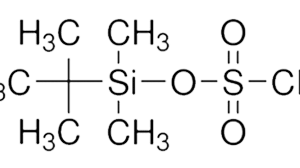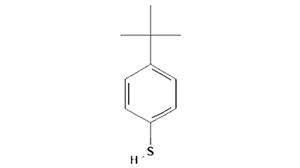Lifechem Products
Tempo, Free Radical
2,2,6,6-Tetramethyl-1-piperidinyloxy (TEMPO) | free radical,2,2,6,6-Tetramethylpiperidine 1-oxyl | 2,2,6,6-Tetramethyl-1-piperidinyloxy,free radical,2,2,6,6-Tetramethylpiperidine 1-oxyl | 2,2,6,6-tetramethyl-1-piperidinyloxy,free radical | 2,2,6,6-tetramethylperidinooxy | tetramethylpiperidinenitroxide | Tanane | Tetramethylpiperidinooxy | 2,2,6,6-Tetramethylpiperidinooxy | 2,2,6,6-Tetramethylpiperidine 1-Oxyl Free Radical | 2,2,6,6-Tetramethyl-1-piperidinyloxy | 2,2,6,6-Tetramethylpiperidoxyl | 2,2,6,6-tetramethyl-1-piperidinyloxy radical | 2,6,6-Tetramethylpiperidine N-oxide |Tanan
What is tempo in organic chemistry?
2,2,6,6 Tetramethylpiperidine-1–oxyl radical (TEMPO), is a stable and readily available organic free radical agent that can be used to oxidize primary aldehydes to primary alcohols. It is often used in sub stoichiometric quantities in conjunction with a stoichiometric oxygenate, such as sodium hypochlorite or PhI(OAc).
What does NaOCl tempo do?
Oxidation of alcohols to carboxylic acid is often done using a minimum stoichiometric level of an expensive and toxic poison.
TEMPO FREE RADICAL Manufacturers
Is tempo a radical trap?
TEMPO can be used as a radical indicator, as a structural probe in biological systems, in conjunction with electron spin spectroscopy, in organic synthesis and as a mediator for controlled radical polymerization.
Why is tempo a stable radical?
TEMPO’s stable, free radical nature is due to its presence of bulky substituent groups. These hinder the reaction between the free radical and other molecules. TEMPO and its derivatives can be used primarily for the oxidation and conversion of primary and secondary alcohols.
TEMPO FREE RADICAL Manufacturers
What is Tempo oxidation of cellulose?
TEMPO-mediated oxidation, a type of regioselectivity microfibril modification of crystalline native cellulose microfibrils, allows for the formation of anionic carboxylate group with very high densities at the microfibril surface.
TEMPO FREE RADICAL Manufacturers
Keyword – TEMPO FREE RADICAL Manufacturers
What is tempo in organic chemistry?
2,2,6,6 Tetramethylpiperidine-1–oxyl radical (TEMPO), is a stable and readily available organic free radical agent that can be used to oxidize primary aldehydes to primary alcohols. It is often used in sub stoichiometric quantities in conjunction with a stoichiometric oxygenant, such as sodium hypochlorite or PhI(OAc).2
What does NaOCl tempo do?
Oxidation of alcohols to carboxylic acid is often done using a minimum stoichiometric level of an expensive and toxic poison.
Is tempo a radical trap?
TEMPO can be used as a radical indicator, as a structural probe in biological systems, in conjunction with electron spin spectroscopy, in organic synthesis and as a mediator for controlled radical polymerization.
Why is tempo a stable radical?
TEMPO’s stable, free radical nature is due to its presence of bulky substituent groups. These hinder the reaction between the free radical and other molecules. TEMPO and its derivatives can be used primarily for the oxidation and conversion of primary and secondary alcohols.
What is Tempo oxidation of cellulose?
TEMPO-mediated oxidation, a type of regioselective microfibril modification of crystalline native cellulose microfibrils, allows for the formation of anionic carboxylate group with very high densities at the microfibril surface.
| CAS No : | 2564-83-2 |
|---|---|
| Formula : | C9H18NO |
Product Specification
- Appearance & Physical State – Off-white to brown powder
- Molecular weight – 156.24500
- Boiling point – 259ºC
- Flash Point – 67ºC
- Smiles – [O]N1C(CCCC1(C)C)(C)C
- Density – 1 g/cm3
- Vapor Pressure – 6.00E-06 mm Hg
- Storage Condition – 2-8ºC
- Water Solubility- Soluble in all organic solvents. Insoluble in water (1870 mg/L)
- INCHI – 1S/C9H18NO/c1-8(2)6-5-7-9(3,4)10(8)11/h5-7H2,1-4H3
Safety Information As Per GHS
Hazard - 8 Corrosive
Hazard Statement(s) as per GHS
- H226: Flammable liquid and vapour.











Recent Comments